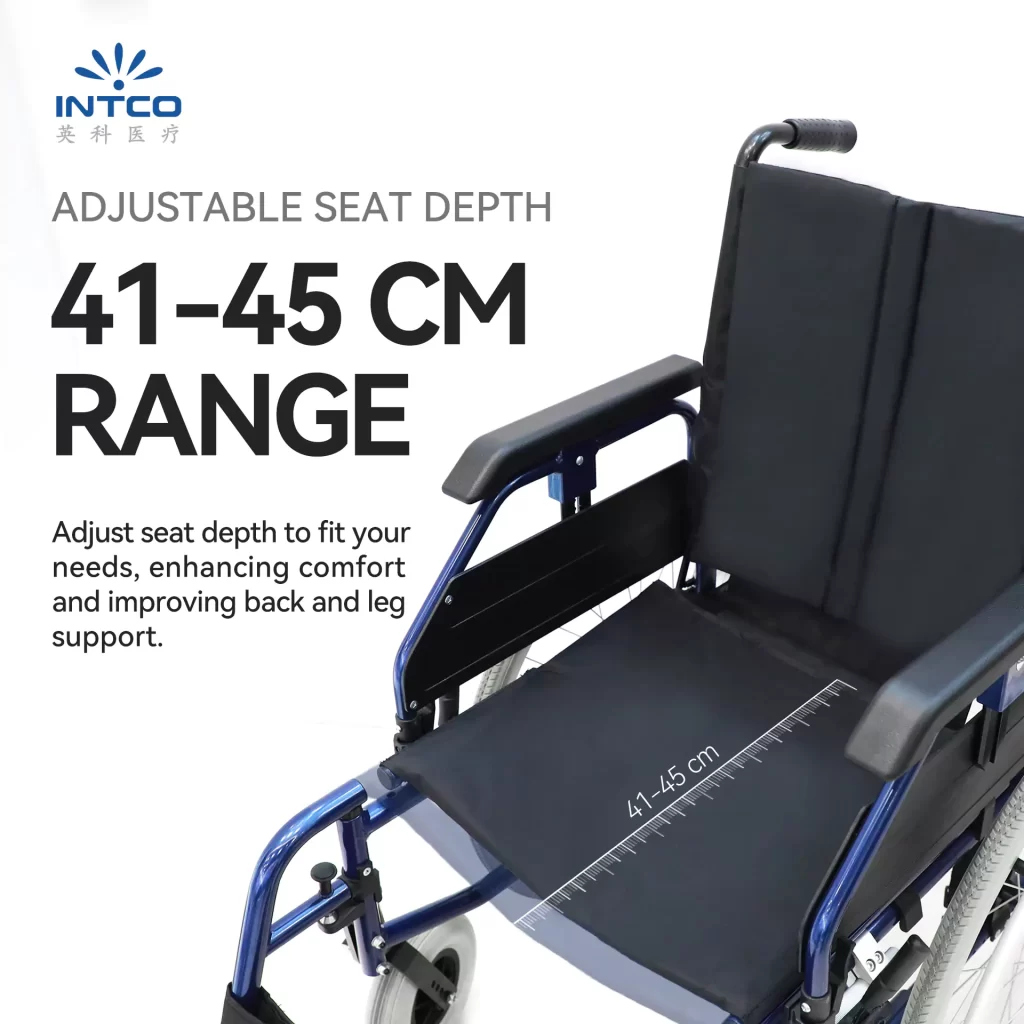Contact Us
Shoulder Pain in Manual Wheelchair Users: Root Causes and Effective Solutions
2025-06-11
Introduction: The Hidden Epidemic
Manual wheelchair users rely heavily on their shoulders—not only as joints but as primary engines of mobility. Unlike hips and knees, shoulders trade structural stability for a remarkable range of motion, making them uniquely vulnerable to high-load, repetitive actions. This mobility–stability trade-off predisposes the shoulder to strain and injury during propulsion.
Annual estimates show shoulder pain affects up to 76% of manual wheelchair users. The primary culprit? Repeated push‑rim propulsion, which overloads the rotator cuff and subacromial space, setting the stage for degeneration, tendon injury, and chronic pain.

Key Causes of Shoulder Pain
Rotator Cuff Degeneration
Each push cycle recruits the rotator cuff—especially the supraspinatus—to stabilize and elevate the arm. Repetition, especially overhead motion, can cause micro‑tears and thickening. Think of it like a tire progressively wearing thin. Over time, tendon thinning, inflammation, and tears provoke shoulder pain during arm elevation.
Ultrasound and MRI studies confirm high prevalence of rotator cuff changes in manual chair users, linking signs of tendinopathy with propulsion intensity.
Shoulder Impingement Syndrome
Poor posture and forceful propulsion can reduce the subacromial space, squeezing inflamed tendon and bursa under the acromion. Repetitive compression leads to bursitis, tendonitis, and even bone spurs.
Biomechanical evidence shows that glenohumeral abduction, scapular internal rotation, and forward flexion—common in wheelchair propulsion—correlate with reduced subacromial clearance and increased impingement syndrome.
Poor Wheelchair Biomechanics
Excessive negative camber: While increased camber aids maneuverability, angles above 15° decrease mechanical efficiency and increase shoulder load and rolling resistance. Excess tilt shifts weight rearward, forcing shoulders to exert more force.
Incorrect fit: Seat too high or too deep disrupts optimal push angle and scapular alignment. Misalignment means increased strain on the shoulder joint and compensatory motions that heighten injury risk. Therefore, choosing a wheelchair with adjustable seat depth can help achieve better biomechanics and reduce long-term shoulder stress.

Evidence-Based Solutions
Wheelchair Optimization
-
Adjust Camber Angle Aim for a low–moderate camber (3°–9°). This range maintains stability and reduces rolling resistance, helping preserve shoulder mechanics .
-
Professional Fitting Utilize specialist expertise to fine‑tune seat height, depth, and back support using lightweight materials. Such adjustments enhance ergonomic push angles and scapular mechanics, reducing shoulder load.
-
Address Misalignment Regularly check rear wheels for alignment issues; even minor misdirection can increase repetitive strain injuries.
Rehabilitation & Strengthening
-
Early-Stage Rehab· Begin with passive range-of-motion (ROM) exercises post-injury to prevent stiffness.· Treat acute flare-ups with cold compression and rest.
-
Strengthening Protocols· Scapular squeezes: Retract the shoulder blades to engage rhomboids and lower trapezius—key for shoulder girdle stability.· Rotator cuff exercises: Use resistance bands for external rotation to strengthen infraspinatus and teres minor—crucial for joint stability.· Posterior chain work: Focus on pull‑motion exercises (e.g., rows) to rebalance stronger anterior muscles; early evidence suggests these shifts reduce pain.
-
Ergometer Training Wheelchair ergometers can simulate settings and reduce peak loads, aiding rehabilitation progression.
Prevention Strategies
Daily Exercise Routine
-
Daily scapular stabilization drills (e.g., prone Y‑raises);
-
Rotator cuff stretches and band exercises, focusing on external rotation and scapula control;
-
Integrate gentle ROM and endurance sets after propulsion sessions.
Conservative programs—combining strength, stretch, feedback—are most effective .
Propulsion Technique
-
Use smooth circular strokes, avoiding quick “jab‑and‑release” pushes linked to high force spikes and jerky motion correlating with increased pain.
-
Maintain an upright thorax, not hunched forward, to preserve scapular spacing.
Ergonomic Lifestyle Adjustments
-
Avoid overhead reaching where possible—use long-handled or adaptive tools.
-
Set up daily spaces to minimize repetitive shoulder elevation (e.g., pull-down storage, slider trays).
-
Apply rest cycles during extended wheelchair propelling periods.
Conclusion: Empowerment Through Proactive Care
Shoulder pain among manual wheelchair users is widespread but not inevitable. Understanding biomechanical vulnerabilities, optimizing wheelchair design, and committing to targeted rehabilitation empowers long-term shoulder health.
By addressing rotator cuff degeneration, impingement triggers, and maladaptive biomechanics—and adopting prevention strategies like daily exercises and improved propulsion technique—users can significantly reduce pain and maintain independence.
Shoulder pain needn’t be a given. With early assessment, thoughtful equipment setup, structured rehab, and proactive habits, manual wheelchair users can thrive with less pain and more mobility.
References & Further Reading
-
Mechanical impingement and reduced subacromial space during wheelchair propulsion (pmc.ncbi.nlm.nih.gov, frontiersin.org, pubmed.ncbi.nlm.nih.gov)
-
Kinematic links between propulsion and shoulder impingement (journals.plos.org)
-
Systematic review of conservative shoulder pain treatment in wheelchair users (pmc.ncbi.nlm.nih.gov)
-
Camber angle, rolling resistance, and shoulder loading studies (biomedical-engineering-online.biomedcentral.com)
-
Muscle imbalance, posterior chain strengthening, and novel pull‑attachment prototype (nature.com)
-
Jerk, rate-of‑rise forces, and shoulder pain linkage (researchgate.net)


